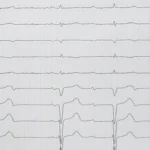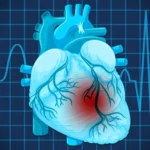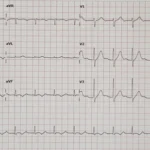Introduction:
Cardiac arrest in pregnancy presents us with a critical challenge, it is an emergency situation that needs swift and precise intervention. So, understanding the multifaceted causes of cardiac arrest in pregnancy is of the greatest importance for healthcare professionals as they are tasked with maternal care. While pregnancy leads to a lot of physiological changes in a woman’s body, pre-existing medical conditions and obstetric complications can also somewhere exacerbate the risk of cardiac arrest.
Through this blog, we will explore the interplay between pregnancy-related factors, the key underlying health conditions, and obstetric challenges and thus we will shed light on the complex landscape of cardiac arrest in patients who are pregnant.
How do pregnancy-related physiological changes contribute to cardiac arrest risk?
During pregnancy, the body of a woman goes through a whole lot of physiological changes to adjust fetal growth, but these alterations can also influence maternal health. Let us learn how these changes contribute to the risk of cardiac arrest.
Hemodynamic Changes:
Pregnancy causes many changes in blood volume, heart rate, and cardiac output to meet the demands of the developing fetus. However, these changes can also strain the cardiovascular system and increase the risk of complications as well.
Vascular Compression:
As the uterus becomes large in pregnancy, it can compress major blood vessels. So this can lead to decreased venous return and a compromised cardiac output. This compression may also decrease the blood flow to vital organs and increase the risk of cardiac arrest.
Hormonal Influence:
Hormonal shifts, especially high levels of progesterone, can affect cardiac rhythm and vascular tone. These hormonal changes may expose pregnant patients to various arrhythmias and other cardiovascular disturbances and this can lead to the risk of cardiac arrest.
Thromboembolic Risk:
Next, pregnancy is related to an increased risk of thromboembolic events because of alterations in coagulation factors and venous stasis. These thrombotic complications can lead to pulmonary embolism which builds on the risk of cardiac arrest.
Read more: What are the causes of cardiac arrest in a pregnant patient?
What pre-existing medical conditions increase the likelihood of cardiac arrest during pregnancy?
Pre-existing medical conditions also pose many challenges during pregnancy. Therefore understanding these conditions is essential for effective risk assessment and management in pregnant patients.
Cardiovascular Diseases:
Conditions like hypertensive disorders, congenital heart defects, coronary artery disease, and cardiomyopathies pose a greater risk of cardiac arrest during pregnancy d. This is because of their impact on cardiac function and hemodynamics.
Endocrine Disorders:
Diabetes mellitus, particularly if it exists with pre-existing vascular complications, increases the risk of cardiovascular events during pregnancy. Diabetes that goes uncontrolled can lead to macrovascular and microvascular complications, making people prone to cardiac arrest.
Respiratory Disorders:
Chronic respiratory conditions such as asthma, chronic obstructive pulmonary disease (COPD), and pulmonary hypertension can impair respiratory function and oxygenation during pregnancy. So, this can also be a leading factor that can contribute to heart attack
Renal Diseases:
Pre-existing renal disorders like kidney disease and renal hypertension can also lead to fluid and electrolyte imbalances, hypertension, and cardiorenal syndrome thus increasing the risk of cardiac arrest in patients who are pregnant.
What obstetric complications are associated with cardiac arrest in pregnant patients?
Understanding obstetric complications is very important for healthcare providers to manage the risks associated very effectively. Let us know more about this.
Hemorrhage:
In this case, severe postpartum hemorrhage, placental abruption, or uterine rupture can lead to hypovolemic shock. Now this can compromise cardiac function and increase the risk of cardiac arrest.
Pre-eclampsia and Eclampsia:
Pre-eclampsia and eclampsia are hypertensive disorders of pregnancy associated with vascular endothelial dysfunction and multiorgan involvement. All these conditions can lead to hypertensive emergencies, seizures, and cardiac complications, and this is inclusive of cardiac arrest.
Amniotic Fluid Embolism (AFE):
AFE is quite a rare but potentially life-threatening obstetric complication and it is characterized by the sudden onset of cardiovascular collapse, respiratory failure, and coagulopathy. AFE can cause cardiac arrest due to severe circulatory and respiratory compromise.
Peripartum Cardiomyopathy (PPCM):
Talking of PPCM is a form of heart failure that occurs during pregnancy or in the postpartum period. It is characterized by impaired myocardial function. PPCM can lead to acute decompensation, arrhythmias, and cardiac arrest in cases that are severe.
Read more: What are the causes of cardiac arrest in a pregnant patient?
Conclusion
It is imperative to comprehensively understand how pregnant patients get involved in cardiac arrest ordeals as this is a critical issue that requires the urgent attention of healthcare providers who are responsible for maternal well-being. Causes of cardiac arrest in pregnancy, pre-existing health conditions, and obstetric complications situation is challengingly extensive and complex. As a result of perceiving these factors and the interventions between them, healthcare teams can better evaluate the risks, take preventive measures, and perform timely interventions.
It is a holistic approach, reducing the risk to both the mother and the unborn baby. Healthcare professionals will be able to carry out emergencies during pregnancy with continuous learning, teamwork, and preparedness. Thus maternal health is secured, and the baby will also benefit from the good outcomes that come along.
Resources:
- https://www.ncbi.nlm.nih.gov/pmc/articles/PMC10032350/
- https://www.ncbi.nlm.nih.gov/pmc/articles/PMC2700584/
- https://www.sciencedirect.com/science/article/abs/pii/S0146000517301313
- https://www.ahajournals.org/doi/10.1161/CIR.0000000000000300
- https://www.asahq.org/about-asa/newsroom/news-releases/2014/03/cardiac-arrest-during-hospitalizatio






